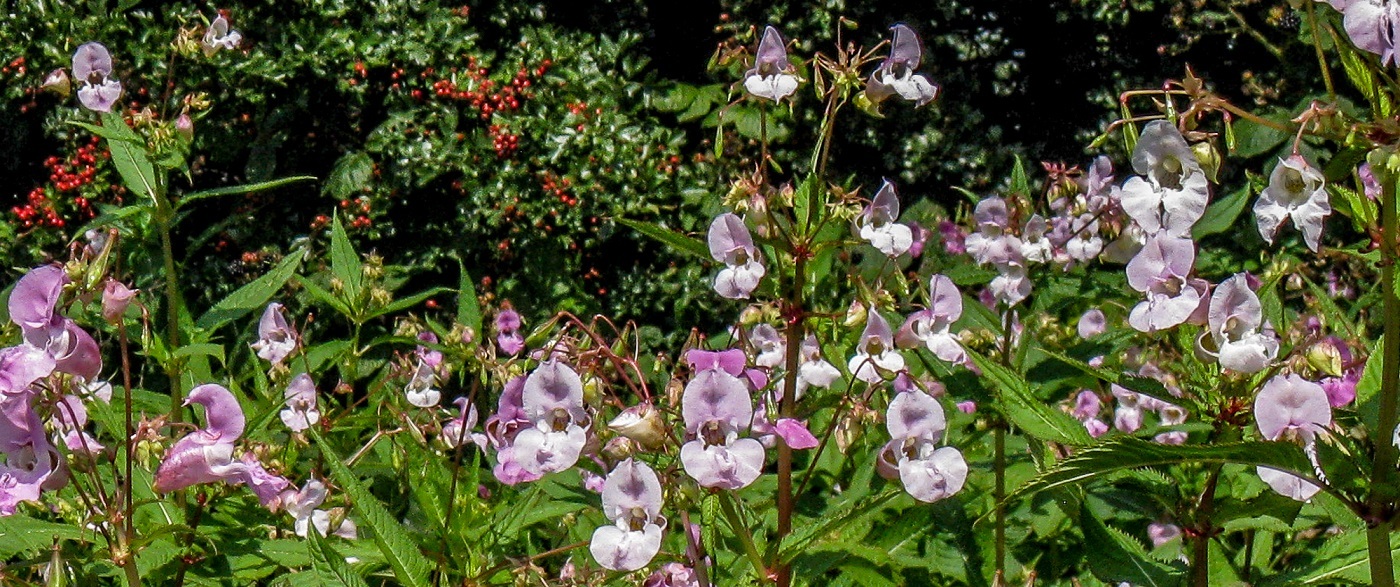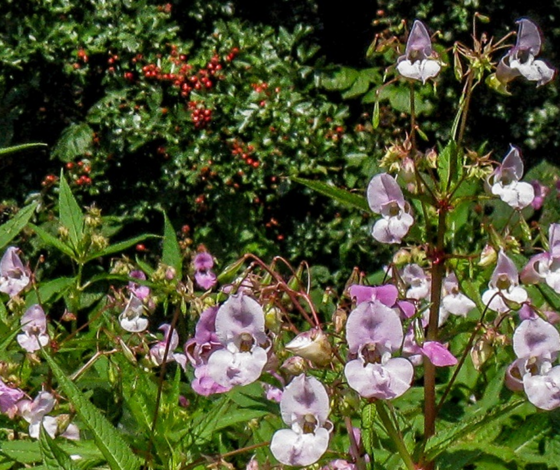
Unsurprisingly Himalayan Balsam is a native plant from the Himalayan region. Introduced to the UK in the 19th century, once again by the Victorians! The plant’s seed quickly spread throughout the UK via our rivers and streams and has become a major problem. It grows rapidly and spreads quickly, out competing other vegetation
Characteristics:
- It typically grows to 1 to 2m high, and have been known to reach 3m in height.
- The stem is quite weak and can be snapped easily, generally green with a reddish tint
- Between June and October it produces clusters of pink flowers, growing to a length of 3 – 5 cm. The shape of the flower can resemble that of a Policeman’s helmet.
- The flowers are followed by green seed pods producing hundreds of seeds that open explosively when ripe or disturbed by human or animal contact, scattering the seeds beyond 6 metres.
- The leaves are an elongated oval (lanceolate) shape up to 20cm in length
- The plant produces sweet nectar from glands situated below the leaf stems.
- It dies back in the winter, which if growing on riverbanks can expose the banks to erosion.
Control Measures:
- Herbicides – Applied either by a sprayer, stem injection or weed wiper;
- Hand-pulling – Pull up annual weeds by hand before they set seed. Hand weeding is easiest on lighter soils;
- Cutting – Repeated cutting to ground level over several years will weaken and eventually kill the weed.
If you have any queries, need an experienced professional to identify a suspicious plant or you need some advice email to info@soilutions.co.uk or give us a call on 0131 538 8456. We’re always happy to have a chat



